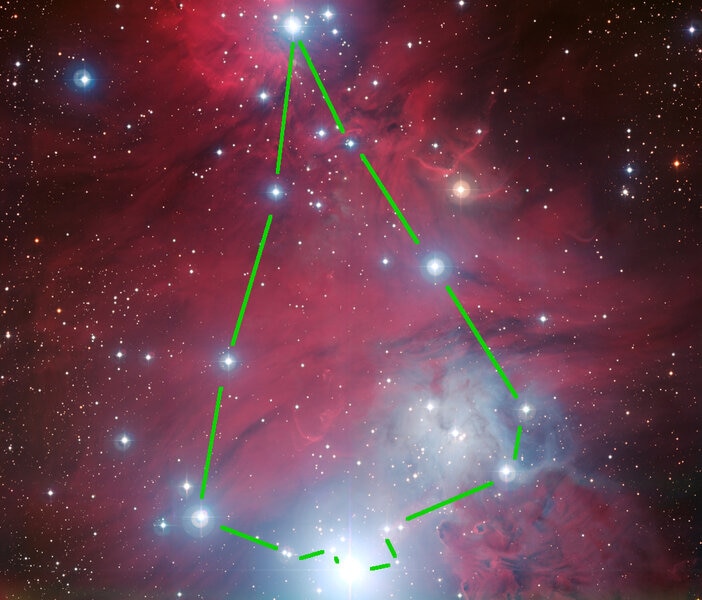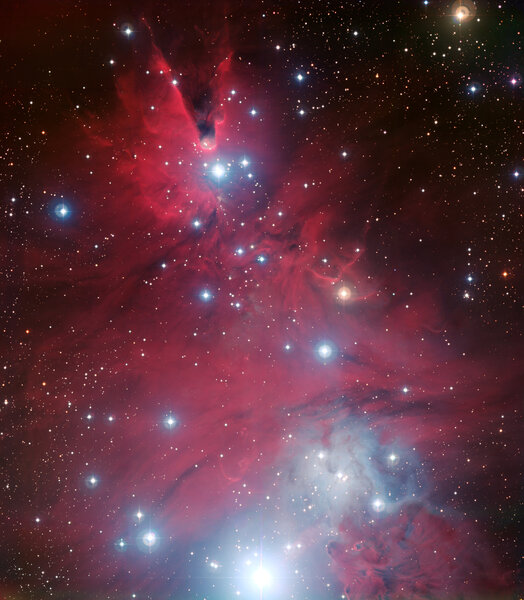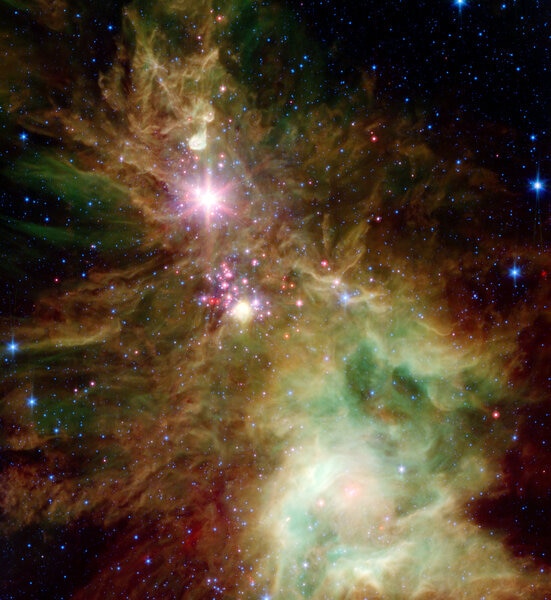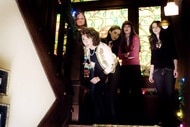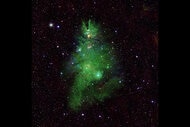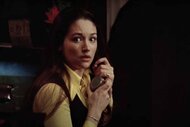Create a free profile to get unlimited access to exclusive videos, sweepstakes, and more!
O, Christmas Tree Cluster
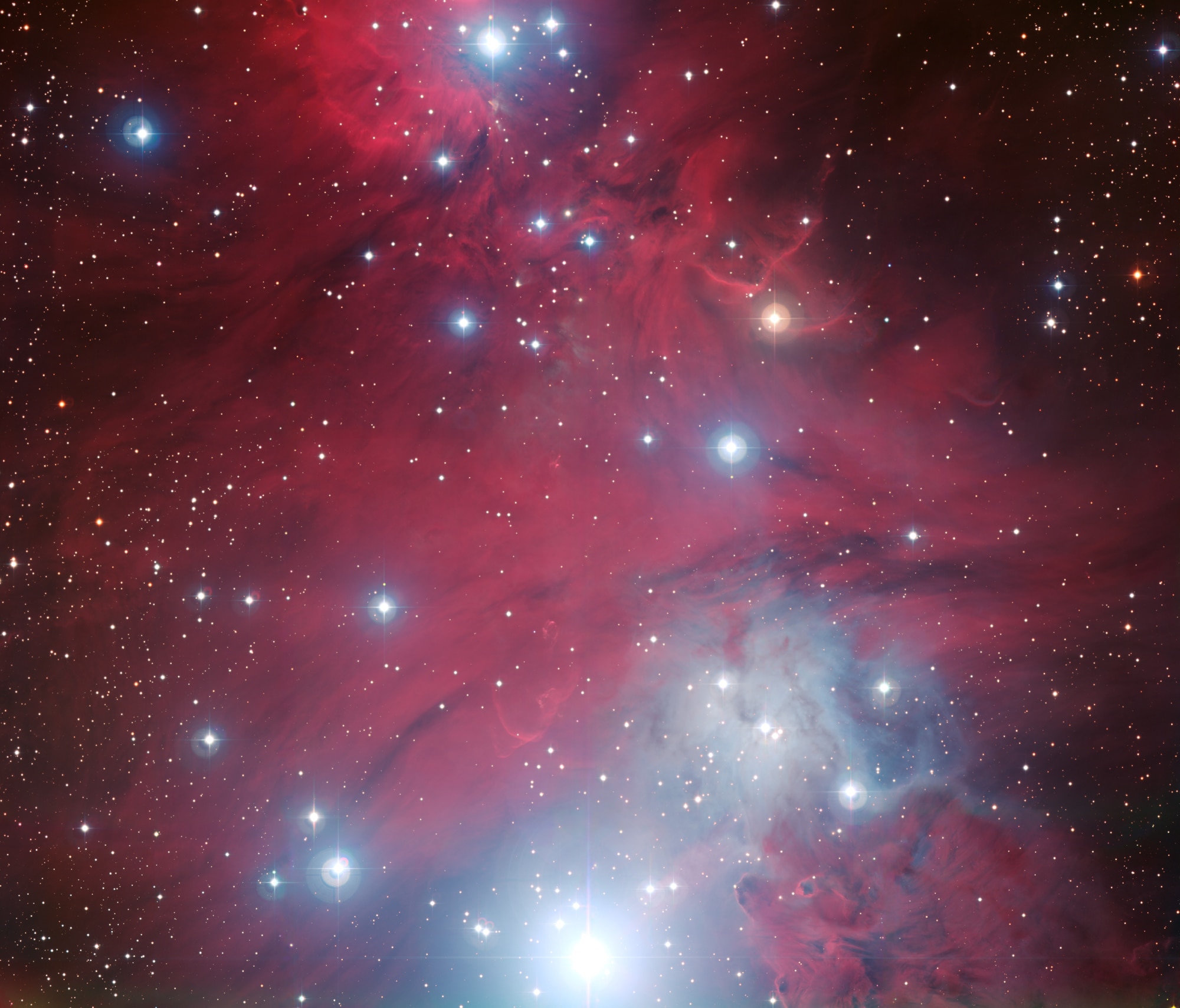
O Christmas tree, O Christmas tree,
Your branches green blue delight us.
— with apologies to Ernst Anschütz
It's the holiday season, which for a lot of people means decorating a Christmas tree. My family does this every year, and it's a fun tradition. As an astronomer, I also approve of topping the tree with a star.
But as an astronomer I also approve of putting a star at the bottom. And a cone at the top.
If you know me — and I do — you just know this has some sort of relevance to a cosmic object.
Yup! Behold, the Christmas Tree Cluster!
That is a portion of NGC 2264, a gigantic cloud of gas and dust about 2,500 light-years away that is actively forming stars. A fraction of these stars are very massive, 20 or more times the mass of the Sun. Stars like that are extremely luminous, hot, and blue. That image, taken using the European Southern Observatory’s Wide Field Imager camera on a 2.2-meter telescope in Chile, approximates natural colors, so blue stuff here really is blue, and red red.
I love it when astronomical objects appear to form recognizable shapes of other more mundane things. In this case, it really does look like a Christmas tree!
What's that you say? You don't see the Christmas tree in there? Oh, I can help. Here:
Now do you see it? It's actually pretty good. The lines I drew are just a suggestion for your eyes to follow; other stars could be a part of this as outline well. Or they could be ornaments. Your kilometerage may vary.
The really bright star at the trunk of the tree is called S Monocerotis, and it's a beast: a massive O type star that's the brightest in the cluster. These kinds of stars don't last long, maybe a few million years. When it goes, it'll go with a bang: a supernova. Given its distance of just 2,500 light-years it will then shine almost as bright as the full Moon in the sky! You might be able to read by it. That'll make some Christmas star, won't it?
Oh, as I mentioned, this cluster is only part of NGC 2264. The other part is what's called the Cone Nebula, which I cut off in the image above to avoid confusion. But now that you see the tree, here's the whole thing:
The Cone is actually a thick cloud of gas and dust (it was famously imaged by Hubble a few years back). The fierce radiation from the stars of the cluster nearby are eroding it away like a river flowing around a sandbar, sculpting it into that shape. It's possible more stars will be born in the tip of the cone.
But note the placement: At the top of the tree. My family tree actually has some pinecone ornaments, but we usually hang them on the tree, not at the top. Maybe we've been doing it wrong this whole time.
As I was poking around looking for images of this cluster, I found one taken by the Spitzer Space Telescope. This orbiting observatory is sensitive to far infrared light, which is emitted by warm objects like dust heated by nearby stars. The thing is, this dust is opaque to visible light, so regions thick with dust look dark in most images. But infrared light can pass through that same dust easily! So the image of the same nebula and cluster looks quite different to Spitzer:
I rotated and cropped the image to match the full image of NGC 2264 above. It can be hard to trace the same stars in both images! Red giant stars blast out infrared but may be dimmer in visible light, and stars hidden by dust in the optical image are spotted easily in the infrared image (like the one flaring madly just below the Cone Nebula in the infrared image).
The reason I include this is due to a cosmic coincidence that made me laugh out loud. In the center of the infrared image is a knot of reddish stars. They're not visible in the optical image, which is interesting; they're buried so deep in dust their optical light can't get out. These are young stars all forming together, and note the pattern: There are several radial lines coming out from the center, making this look like a snowflake! And in fact astronomers have nicknamed this the Snowflake Cluster. How appropriate given its location.
And one final thing, a bonus: The Christmas Tree Cluster is actually an easy binocular target! The stars are bright enough and spread out enough to spot that way, and should look great through a small telescope, too (here's a guide to finding it in the sky). Even better: It's in the constellation of Monoceros (the Unicorn), located to the east of Orion (to the left for Northern Hemisphere observers), which means it's actually up this time of year. Monoceros is a winter constellation, and in late December for those of us in the right-side-up part of the Earth it rises just after sunset, and is high in the sky by midnight.
I love tight clusters of stars — one of my favorites is Collinder 39, aka the Coat Hanger Cluster (and you have to see that one to believe it; it cracks me up every time I view it in binoculars), but I have not yet seen this one. But 'tis the season, right? I look forward to a clear night, chilly as it might be, to take out my binocs and find it. Any excuse to go outside and look up is a good one.

